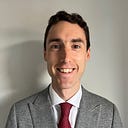Curriculum Stories: KS3 Physics
There has been a great deal of generosity within the teaching community during the COVID crisis: lots of resources have been shared, lots of free CPD has been made available, and the Oak National team have built an entire online platform from scratch. Wishing to make at least a small contribution, I thought it would be good to share what I’ve been working on during this time: a series of curriculum ‘stories’ to support both students and teachers of Science, in particular Physics, at Key Stage 3.
- Energy & Thermodynamics
- Sound & Light
- Forces & Space
- Electromagnetism
- Mathematical & Experimental Methods
Why stories?
The idea of writing stories is stolen from the science team at Michaela — two of my colleagues attended Michaela’s CPD evening earlier this year and this was one concept which really stood out. My understanding is that the Michaela team use these stories primarily to help teachers work out the order in which they should teach the lessons in each unit.
While this is definitely a valuable use of these resources, I think it misses the real value of developing a narrative. Knowledge can’t simply be seen as a series of facts or information, with the teacher’s job purely to ‘sequence’ these data points. As I wrote about in a series of blogs last year, knowledge isn’t something we have, it’s something we are, something we immerse ourselves in and which shapes the way we interact with the world.
This is why curriculum stories are so powerful: they allow students to see how the disparate facts covered within a scheme of work fit together within a broader narrative. To borrow the metaphor I used last year, knowing isn’t just memorising the shapes of the peaks; it’s being aware of where they stand in relation to one another.
Facts first or stories first?
I’ve been having a conversation on and off this year with a fellow physics teacher. He argues that we can’t tell students the stories until they have acquired the basic knowledge. I retorted that students haven’t acquired anything worthy of being called knowledge unless they’re aware of how that piece of information fits into the story.
In the end, we decided that we were both right, at least in part. It’s a chicken and egg scenario. There will always be a role for retrieval practice, for knowledge organisers, for making kids sit down and learn definitions. But, I would argue, these processes are a lot more meaningful if students have already been given a glimpse of the bigger picture these facts are a part of.
KS3 Science
What does all this mean in terms of our science curriculum? There are two main points.
Firstly, any good story has a thread that runs all the way through. Ours is the means by which scientific knowledge is created. We’re using Richard Feynman’s version of Karl Popper’s falsification theory, which can be found here. Again and again throughout the curriculum, we return to the idea that science develops by a three stage process:
- We guess. Scientists try to visualise what’s happening using metaphors. In the stories published here, these metaphors take the form of ‘as if’ sentences, e.g. atoms behave as if they’re made up of tiny balls of positive charge with electrons scattered randomly inside (Thomson’s plum pudding model).
- We deduce the consequences. Scientists say: suppose our guess is true, what would we expect to happen if we did x? Deductions typically take the form of if … then … sentences, e.g. if atoms behave as if they are tiny plum pudding-like objects, and we direct high energy alpha particles at them, then we would expect all the alpha particles to go straight through.
- We check by experiment. If we manage to measure or observe what we expected to happen, then our guess could still be true. If we measure or observe something different, then our guess is wrong, and we need a new guess, e.g. that atoms behave as if they are tiny solar system-like objects. And so the cycle begins again.
Secondly, and the above example illustrates this, we’ve included episodes from the history of science to make these ideas tangible. (The one above isn’t actually in the stories being shared here, but is hopefully familiar to any science teacher).
We’ve tried to include as many examples of scientific knowledge being created via the above process as possible; in many cases, they tie together the entire scheme of work. For example, our sound and light scheme starts with the argument over whether light is a particle or a wave, and ends with the idea that light is both.
Are we expecting every student to understand the significance of wave-particle duality by the end of Year 7? Of course not. We hope, however, that by being offered a glimpse of the big questions that drove Newton, Huygens, Maxwell and Einstein to come up with their theories in the first place, our students will be better placed to understand what waves and particles are and why they’re significant.
Episodes like these are not mere ‘hinterland’. They are integral to enjoying, appreciating and learning to explore the landscapes of the scientific disciplines. This is why we’ve placed them at the heart of our curriculum.
